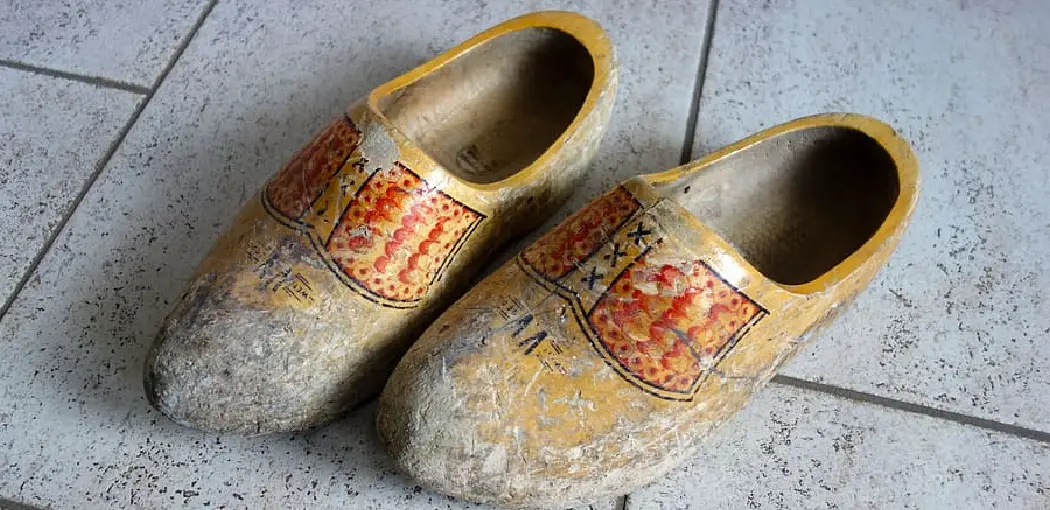Mold can be a pesky problem. It seems to show up at the worst times and can be challenging to get rid of. In addition to making your home or office smell musty, mold can also cause health problems. If you have ever had mold on your shoes, you know how frustrating it can be. But what causes this fungus to form in the first place? In this article, we’ll discuss what causes mold on shoes. Keep reading to find out!
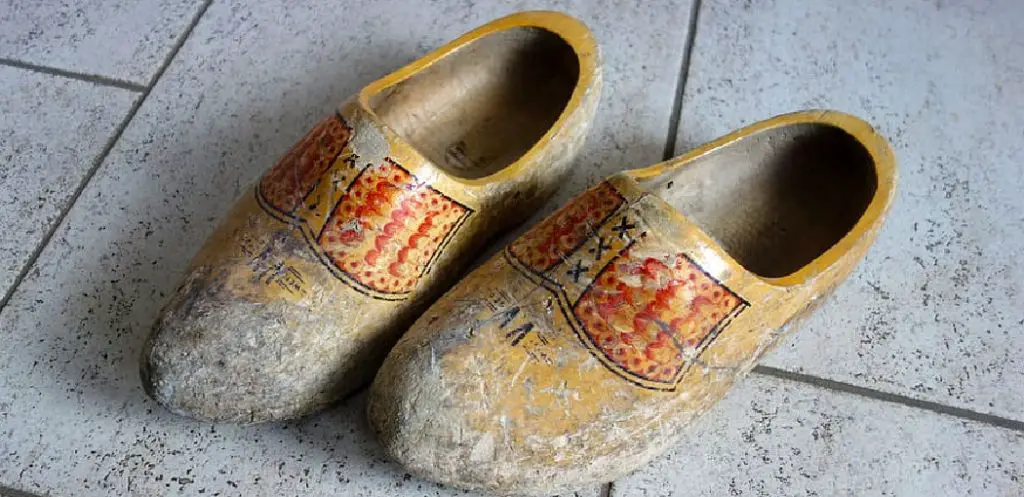
Mold is a type of fungus that thrives in moist, dark environments. When mold spores land on a damp surface, they begin to grow and reproduce. Shoes are the perfect breeding ground for mold due to their often warm and humid environment. Sweaty feet can make shoes even more inviting for mold growth.
Summary: Mold on shoes is caused by moisture, warmth, and lack of ventilation. When shoes are sweaty or wet, left in a dark and damp place without ventilation, mold spores can easily grow and spread. The longer the shoes stay damp, the higher the chance for mold to develop. Once mold starts growing, it can ruin shoes and even cause health problems.
A Detailed Guide on What Causes Mold on Shoes
A few different things can cause mold to grow on your shoes. Here are a few of the most common causes:
Cause 1. Moist Shoe Areas
If your shoes are constantly in contact with moist environments, then it’s likely that mold will form over time. This can be a problem, especially if you live in a humid climate. You can do a few things to prevent moisture from building up in your shoe area. First, try to air out your shoes as often as possible and make sure they are completely dry before putting them away. If you have to walk through rain or snow, try to keep your shoes as dry as possible when you’re done. You can also buy shoe dehumidifiers to help keep the moisture levels down in your shoe area.
Cause 2. Poor Ventilation
Mold spores thrive in moist environments, so if your shoes are constantly wet, you’re providing the perfect conditions for them to grow. One way to prevent this is to make sure your shoes are well-ventilated. Then, when they air out, the moisture will dissipate, and the mold won’t be able to take hold. You can also try using a shoe dryer to hasten the process.
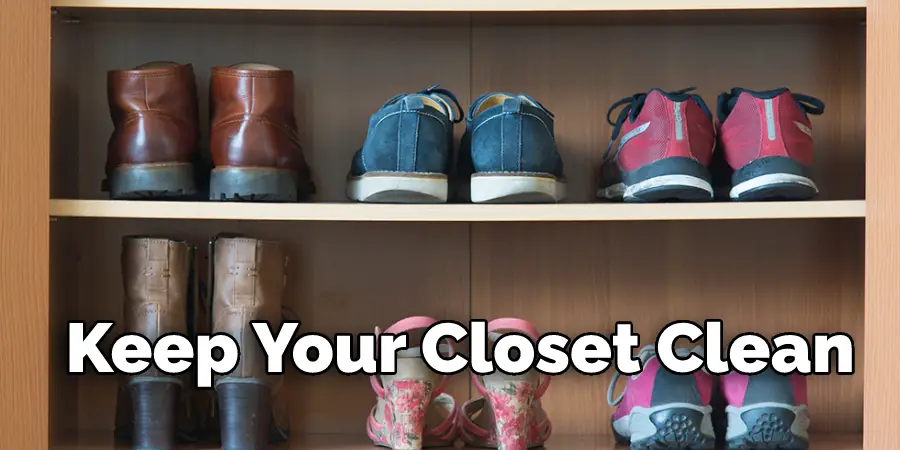
Cause 3. Filthy Closets
If you’re like most people, your shoes probably spend a lot of time in your closet. And if your closet isn’t clean, that means your shoes are likely picking up all sorts of dirt, dust, and other debris. That buildup can create an ideal environment for mold to grow, so it’s essential to keep your closet clean and organized. If you don’t have enough space to store all of your clothes and shoes, try using some storage bins or boxes to organize everything. Then, you can easily see what you have and keep your closet looking neat and tidy.
Cause 3. Trapped Humidity and Moisture
Shoes constantly exposed to humidity and moisture are more likely to have mold growth. When the shoes are in a moist environment, the fungus will grow and spread. This can be due to leaving your shoes in a wet area such as a basement, near a shower, or by a pool. It can also occur when the shoes are worn in hot and humid weather. To prevent mold from growing on your shoes, make sure you allow them to dry completely after wearing them in wet weather and avoid keeping them in a moist environment.
Cause 4. Wooden Shelves and Racks
If you store your shoes on wooden shelves or racks, they may be more susceptible to mold. Wood is a natural material that can absorb moisture, which creates the perfect environment for mold to grow. If you notice mold on your shoes, it’s essential to clean them right away and make sure the area is dry before putting your boots back. You may also consider storing your shoes in plastic bins or boxes instead of on wood shelves to prevent mold growth.
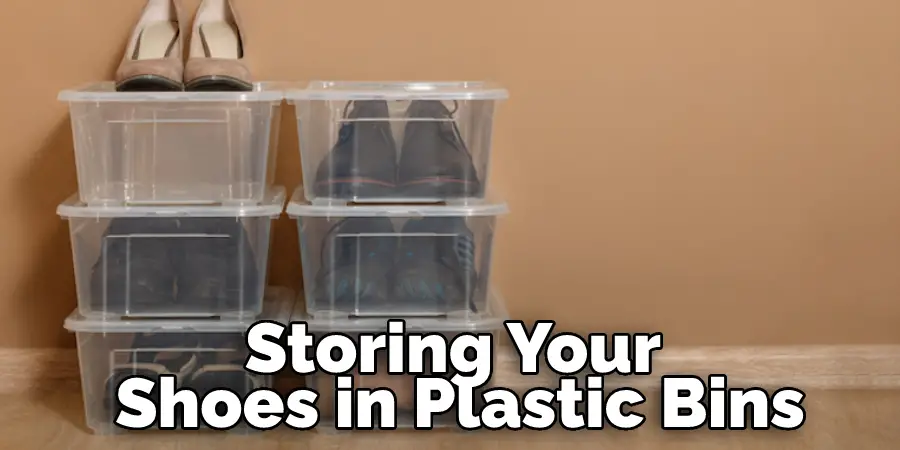
Cause 5. Improper Hygiene
One of the most common causes of mold on shoes is poor hygiene. If you don’t clean your feet and toes regularly, it can create an environment conducive to mold growth. Ensure you wash your feet every day with soap and water, and dry them thoroughly. It would be best if you also scrubbed between your toes to remove any dirt or sweat. If you have an athlete’s foot, treat it right away to prevent it from spreading to your shoes.
Preventing Mold on Shoes
Mold on shoes is a common problem, and it’s easy to understand why. Shoes are dark and damp, which creates the perfect environment for mold to grow. However, if you want to prevent mold from growing on your shoes, you can do a few things.
Store with Care:
It’s best to store shoes in a cool, dry place where they can breathe. Cardboard boxes or breathable bags are ideal. Avoid storing shoes in plastic bags, as this creates a humid environment that can lead to mold and mildew.
Let them Breathe:
After you wear your shoes, let them air out before storing them away. This will help prevent moisture from building up and creating an environment where mold can grow.
Clean Them Regularly:
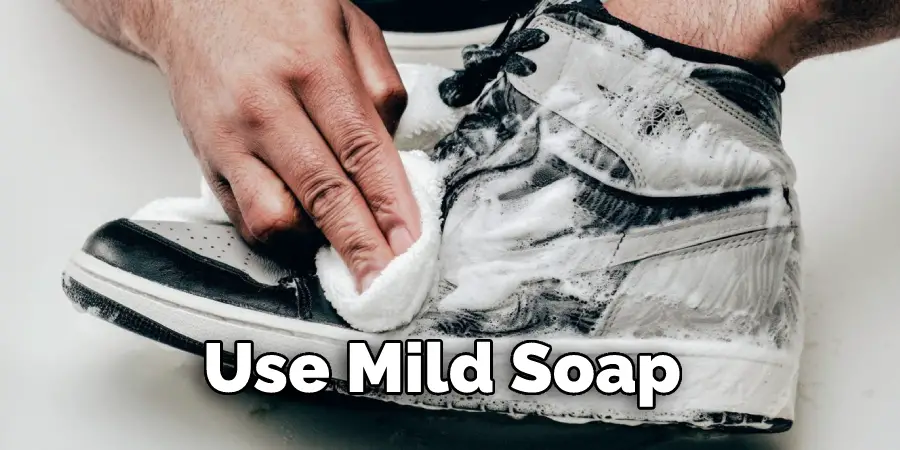
It’s essential to clean your shoes regularly, especially if you live in a damp climate. First, use mild soap and water to clean the surface of your shoes. You can also use a shoe or old toothbrush to get into hard-to-reach areas. Finally, let your shoes air dry completely before storing them away.
Always Air-Dry:
Never put your shoes in the dryer, as this can damage the material and cause them to retain moisture. Instead, if your shoes are wet, stuff them with newspaper and let them air-dry in a cool, dark place.
Check for Damage:
If you notice any mold on your shoes, it’s essential to take action immediately. First, remove the affected shoes and clean them thoroughly. If the mold is widespread, you may need to throw them away and buy new ones.
Change It Up:
If you habit wearing the same shoes every day, consider switching them up. Rotating your shoes will help them dry out properly and prevent mold from growing.
Frequently Asked Questions
How Do You Stop Mold From Growing on Your Shoes?
If you’re noticing mold growing on your shoes, there are a few things that you can do to try and prevent it from becoming an issue. First of all, make sure that you store your shoes in a dry and ventilated place. Second, if the mold is particularly dense or difficult to remove (as with black mold), then you may need to treat the shoe with an anti-mold agent. Third, be sure to clean any contaminated areas regularly using a Mold Destroyer product or bleach solution. And finally, leave enough time between wearing pairs of shoes so that they have time to air out and avoid reinfection.
Can Moldy Shoes Be Saved?
Unfortunately, Yes. Moldy shoes can be saved if you take the right steps to do so. The first step is to seal any cracks in the shoe with a special type of adhesive that is designed for this purpose. Next, pour boiling water into the shoes and allow them to sit for 30 minutes. This will kill any mold or fungi that may be present and make it easier to remove them later on using a cleaning agent or Vacuuming machine without leaving debris behind.
What Kind of Mold Grows on Shoes?
Mold can grow on any type of shoes, including sneakers, boots, and sandals. The main culprits are moisture and the chemicals used in shoe manufacturing. If your shoes sit around in wet or damp conditions or if you wear them outside often, they’re more likely to become moldy. You can try cleaning them with a mild detergent and dryer sheet before storing them away. In cases where mold is already present, it may be necessary to remove it using a Mold Removal Kit from an appliance store or professional cleaner.
Should I Throw Out Moldy Shoes?
Mold can be a nasty thing, and it’s not unusual for it to appear in damp or humid environments – like shoes. If you find mold growing in your shoes, there are a few things you should do to get rid of it:
- Remove the shoes and wash them in warm water with detergent.
- Dry the shoes completely, using a high-heat setting if possible.
- Disinfect the shoes with a mold-killing shoe cleaner, such as Lysol’s Mold Destroyer or Mr. Clean’s Mold Eraser.
- Place the shoes in an airtight container and store them somewhere dry and out of the way.
Conclusion
Mold on shoes can be a nuisance, but it’s also essential to know how to get rid of it. With the correct information and some elbow grease, you’ll be able to clean your shoes and keep them mold-free. We hope you have learned what causes mold on shoes. If you had problems with mold on your boots. Let us know What solutions have worked for you.

